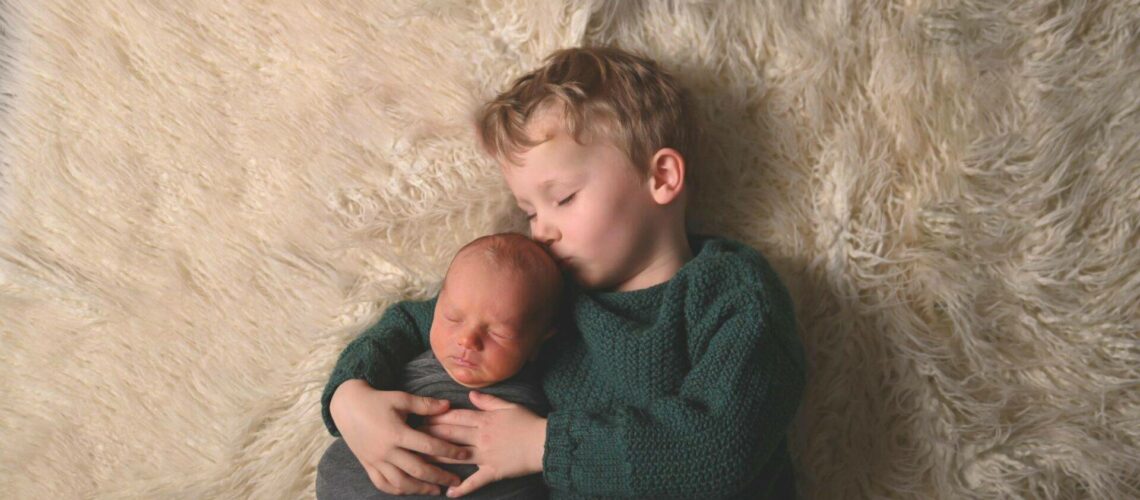Sibling photography is a unique and rewarding endeavor that comes with its own set of challenges and charms. While many envision picture-perfect moments between siblings captured effortlessly, the reality often presents a more chaotic and unpredictable scenario.
- Charm: The charm of sibling photography lies in the genuine and unfiltered moments that can be captured between brothers and sisters. These photographs not only serve as lasting memories but also showcase the special bond shared by siblings.
- Challenge: On the flip side, sibling photography can be a challenging task, especially when trying to orchestrate posed shots or manage the varying personalities and moods of multiple siblings. It requires patience, creativity, and a keen eye for capturing spontaneous moments.
Common expectations surrounding sibling photography often center around picture-perfect poses, coordinated outfits, and smiling faces. However, in real-life scenarios, capturing authentic and natural sibling moments may involve messy hair, mismatched clothes, and perhaps even a few playful squabbles.
To navigate the charm and challenge of sibling photography successfully, here are some valuable tips to help you capture natural and memorable moments:
- Encourage Interaction: Rather than focusing solely on posed shots, encourage siblings to interact naturally with each other. Genuine laughter, shared secrets, and playful gestures can result in heartwarming photographs.
- Embrace Imperfections: Embrace the imperfections and quirks that make each sibling unique. These individual traits can add character and authenticity to your photographs.
- Capture Candid Moments: Some of the most precious sibling moments occur when they are unaware of the camera. Be ready to capture candid shots that showcase their genuine emotions and connections.
- Focus on the Connection: Ultimately, sibling photography is about capturing the special bond and relationship between brothers and sisters. Focus on showcasing the love, support, and camaraderie that exist between them.
Setting Realistic Expectations
Sibling interactions can be both rewarding and challenging. One of the things to keep in mind when it comes to sibling dynamics is the unpredictability that often accompanies them. Despite having grown up together, siblings can have vastly different personalities, preferences, and ways of communicating. This diversity can lead to unexpected clashes and moments of harmony, making it important to approach sibling relationships with an open mind and a willingness to adapt.
Patience and flexibility play key roles in navigating the complexities of sibling interactions. Being patient allows you to give your siblings the benefit of the doubt and understand that they, like you, are also learning and growing. Flexibility, on the other hand, allows you to adjust your expectations and reactions based on the situation at hand. Siblings may not always meet your expectations, but being understanding and flexible can help alleviate tension and promote better communication.
Instead of striving for perfection in your relationships with siblings, it can be more fulfilling to focus on embracing candid moments. These are the unscripted, genuine interactions that arise when you and your siblings are being yourselves. Candid moments are often more memorable and meaningful than meticulously planned or orchestrated interactions, as they capture the essence of your relationships in their purest form.
In summary, setting realistic expectations for sibling interactions involves acknowledging their unpredictability, practicing patience and flexibility, and valuing candid moments over perfection. By adopting this mindset, you can cultivate more authentic and fulfilling relationships with your siblings, built on understanding, acceptance, and genuine connection.
Pre-Session Communication with Parents
Effective communication with parents before a photoshoot is crucial in ensuring a successful and stress-free session. By discussing goals and expectations in advance, photographers can create a comfortable environment that benefits both the children and their parents. Let’s delve into the key points of pre-session communication:
Importance of Discussing Goals with Parents
Engaging in a conversation about the desired outcome of the photoshoot allows parents to express their vision and preferences. Understanding what they hope to capture in the photographs enables the photographer to tailor the session accordingly. Whether it’s capturing candid moments or posed shots, aligning on goals helps in delivering satisfactory results for all parties involved.
Setting a Relaxed Tone for the Photoshoot
Setting a relaxed and friendly atmosphere during the photoshoot is essential, and it starts with the pre-session communication. By reassuring parents about the process and assuring them that their children’s comfort is a top priority, photographers can help alleviate any nervousness or anxiety. This fosters a positive environment where children can freely express themselves, resulting in authentic and natural photographs.
Understanding Each Child’s Personality
Every child is unique, with different personalities, interests, and comfort levels in front of the camera. Communicating with parents before the shoot allows photographers to gain insights into each child’s temperament. This knowledge helps in approaching the session in a way that resonates with the child, making them feel at ease and bringing out their genuine self during the photoshoot.
Effective pre-session communication not only builds trust and rapport with parents but also sets the foundation for a successful photoshoot. By discussing goals, creating a relaxed atmosphere, and understanding each child’s personality, photographers can capture memorable moments that reflect the true essence of the children being photographed.
Creating a Fun and Relaxed Environment
When it comes to working with children, creating a fun and relaxed environment is key to their engagement and overall well-being. By incorporating games, humor, and allowing breaks, you can ensure that children not only enjoy their time but also thrive in the learning process.
Using Games and Activities to Keep Children Engaged
Integrating games and activities into the learning environment is a fantastic way to keep children engaged and excited about the tasks at hand. Whether it’s a educational game, a physical activity, or a hands-on project, these interactive elements can capture children’s attention and make learning more enjoyable.
- Implement interactive quizzes or puzzles related to the lesson.
- Encourage group activities that promote teamwork and collaboration.
- Use educational apps or online platforms that offer interactive learning experiences.
The Role of Humor and Playfulness
Humor and playfulness can work wonders in creating a positive and light-hearted atmosphere for children. By incorporating jokes, funny anecdotes, or even playful interactions, educators can help children feel comfortable, happy, and more open to learning.
- Share funny stories or jokes related to the subject matter.
- Use humorous visuals or props to enhance the learning environment.
- Encourage students to express themselves through creative and playful outlets.
Allowing Breaks for Kids to Reset and Relax
Recognizing the importance of breaks in a child’s routine is crucial for maintaining their focus and well-being. Allowing children to take short breaks not only helps them reset their minds but also promotes relaxation, which can enhance their overall productivity and learning experience.
- Schedule short recess periods between lessons for physical activity.
- Encourage mindfulness exercises or relaxation techniques during breaks.
- Provide a calming environment with comfortable seating and soothing music.
By incorporating these elements into the educational setting, educators can create a fun and relaxed environment that fosters creativity, engagement, and a positive learning experience for children.
Posing and Directing Techniques
When it comes to capturing beautiful moments between siblings in a photo shoot, the key lies in utilizing simple and natural poses. Rather than forcing rigid and unnatural positions, encouraging siblings to interact in a way that feels genuine can result in photographs that exude authenticity and warmth.
Guiding interactions between siblings during a photo session is often more effective than strictly posing them. By setting the scene and providing gentle prompts, such as asking them to share a secret or tell a joke, you can capture candid moments that showcase their bond and connection.
Moreover, a successful photoshoot goes beyond simply getting subjects to strike a pose. It involves capturing the individual personalities of each sibling as well as the dynamics of the group as a whole. This can be achieved by observing their interactions, expressions, and body language, and then directing them in a way that brings out their unique traits.
- Focus on creating a comfortable and relaxed environment where siblings can be themselves.
- Encourage natural movements and gestures rather than rigid poses.
- Acknowledge and celebrate the quirks and idiosyncrasies of each sibling.
By combining these techniques, you can produce photos that not only document a moment in time but also tell a compelling story about the bond between siblings. Remember, the goal is to capture genuine emotions and interactions that will be cherished for years to come.
Dealing with Challenges and Tantrums
Children, especially young ones, may often face challenges and exhibit tantrums as part of their development. As caregivers, understanding effective strategies for managing disagreements and mood swings is crucial in fostering a positive environment. Here are some useful approaches to navigate through challenging moments:
1. Strategies for Managing Disagreements and Mood Swings:
- Active Listening: When a child expresses discontent or frustration, actively listen to their concerns without interrupting. This validates their emotions and helps build trust.
- Empathy: Show empathy towards the child’s feelings by acknowledging their emotions. This can help de-escalate conflicts and make them feel understood.
- Positive Reinforcement: Encourage positive behavior by praising and acknowledging moments when the child handles disagreements or emotions well.
- Teaching Coping Mechanisms: Help children develop healthy coping mechanisms such as deep breathing exercises or taking a break when feeling overwhelmed.
2. Redirecting Focus and Maintaining a Calm Demeanor:
- Distraction Techniques: Redirect the child’s focus to a different activity or topic to help them shift away from the source of frustration.
- Modeling Calm Behavior: Children often mirror the actions of adults; maintaining a calm demeanor can set a positive example for handling challenging situations.
- Establishing Routine: Consistent routines provide stability and predictability, reducing the likelihood of meltdowns due to unexpected changes.
3. Ensuring Safety and Comfort for All Children:
- Safe Environment: Create a safe physical environment where children can explore and play without encountering potential hazards.
- Comforting Measures: Offer comfort items or gestures, such as a favorite toy or soothing words, to help children feel secure during moments of distress.
- Setting Boundaries: Clearly communicate rules and boundaries to establish a sense of structure and security for the children.
By employing these strategies, caregivers can effectively address challenges and tantrums, promoting a nurturing and supportive environment for children to thrive.
Involving Parents in the Process
Parents play a crucial role in a child’s development, and involving them in the educational process can have numerous benefits. By actively engaging parents, educators can create a collaborative environment that supports the child’s learning and growth. Here are some effective ways to involve parents in the educational process:
1. Encouraging parents to participate or observe:
Encouraging parents to participate in school activities, parent-teacher meetings, and classroom events can enhance parental involvement. This not only allows parents to stay informed about their child’s progress but also fosters a sense of partnership between parents and educators.
2. Using parental presence to comfort or motivate:
Parents can provide emotional support to their children during challenging times at school. Having a parent present can offer comfort to a child who may be feeling anxious or overwhelmed. Additionally, parental encouragement and motivation can inspire children to stay focused and strive for academic success.
3. Balancing attention between siblings:
When involving parents in the educational process, it is essential to balance attention between siblings. Each child deserves individualized support and recognition. Educators can work with parents to ensure that attention is distributed equitably among siblings, taking into account their unique needs and abilities.
Overall, involving parents in the educational process can create a supportive ecosystem that nurtures the child’s academic and personal growth. By fostering strong partnerships between parents and educators, children can receive the guidance and encouragement they need to thrive in their educational journey.
Post-Processing and Selection of Images
When it comes to photography, the post-processing and selection of images are crucial steps that can truly enhance the overall quality of your photographs. In this blog section, we will delve into key considerations for post-processing and selecting the best images captured during a photoshoot.
Choosing images that capture authentic moments
Authenticity is key when selecting images for your final collection. Look for photos that encapsulate genuine emotions and candid moments. These images have the power to evoke strong feelings and create a lasting impact on viewers. Pay attention to subtle gestures, natural smiles, and meaningful interactions between subjects. Avoid over-posed or artificial-looking shots, as they can detract from the authenticity of the moment.
Editing considerations for sibling photos
When photographing siblings together, it’s important to maintain a sense of balance and harmony in the final images. During the editing process, pay attention to details such as facial expressions, body language, and the overall dynamic between the siblings. Ensure that each child is represented in a flattering light and that the editing enhancements complement their individual personalities. Additionally, consider the use of color correction to create a cohesive look across all sibling photos.
Involving parents in the selection process
Parents play a crucial role in the selection of images, especially when it comes to family photoshoots. Involve parents in the decision-making process by allowing them to provide input on their favorite shots. Consider creating a shared online gallery where parents can view and shortlist their preferred images. By including parents in the selection process, you can ensure that the final collection aligns with their vision and expectations.
Remember, the post-processing and selection of images can greatly influence the overall impact of your photography work. By carefully choosing authentic moments, editing sibling photos thoughtfully, and involving parents in the selection process, you can create a final collection of images that truly resonate with your audience.
Conclusion
Sibling photography brings with it a mix of joys and challenges that are unique to capturing the bond between brothers and sisters. It is a journey filled with candid moments, genuine emotions, and the unpredictable nature of sibling dynamics.
“In the chaos of laughter and shared secrets, there lies the essence of sibling photography.”
Recapping the joys, we see the magic of freezing those spontaneous giggles, playful banters, and affectionate embraces that siblings naturally share. These moments not only create treasured memories but also beautifully reflect the unbreakable bond that siblings have.
On the flip side, the challenges of sibling photography often involve handling disagreements, mood swings, and short attention spans. However, overcoming these challenges leads to capturing authentic and real interactions that truly showcase the essence of sibling relationships.
“Real is beautiful, and beautiful is capturing the natural interactions between siblings.”
Despite the occasional chaos and tantrums, embracing the unique dynamic of each family is key to creating timeless and meaningful sibling portraits. Every family has its own story, its own quirks, and its own way of showing love. By appreciating and celebrating these differences, we can capture images that are not just visually stunning but also emotionally resonant.
So, to all aspiring sibling photographers out there, remember to cherish the joys, navigate the challenges, and always embrace the beauty of real and unscripted moments. The world of sibling photography is a colorful tapestry of laughter, tears, and unforgettable memories waiting to be captured.
TL;DR:
Capture the joys and challenges of sibling photography authentically, embrace the beauty of real interactions, and celebrate the unique dynamic of each family for timeless and meaningful portraits.



